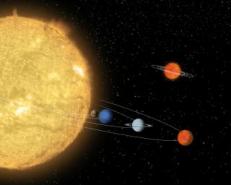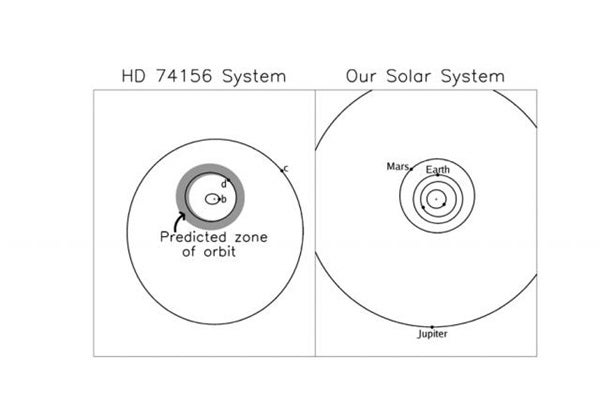Astronomers have successfully predicted the existence of an unknown planet, the first since Neptune was predicted in the 1840s. This planet, however, is outside our own solar system, circling a star a little more than 200 light-years from Earth.
The University of Arizona’s Rory Barnes and his associates predicted the unknown planet from their theoretical study of the orbits of two planets known to orbit star HD 74156.
Barnes and his colleagues studied the orbits of several planetary systems and found that planets’ orbits tend to be packed as closely together as possible without gravity destabilizing their orbits. They reasoned that this tight packing resulted from universal processes of planetary formation.
But the two planets, named “B” and “C”, orbiting the star HD 74156 had a big gap between them. They concluded that if their “Packed Planetary Systems” hypothesis was correct, then there must be another planet between planets B and C, and it must be in a particular orbit.
“When I realized that six out of seven multiplanet systems appeared ‘packed,'” Barnes says, “I naturally expected there must be another planet in the HD 74156 system so that it, too, would be packed.”
Jacob Bean and his colleagues from the University of Texas observed the planetary system carefully and confirmed that a new planet was located where Barnes had predicted. The new planet is named, by convention, HD 74156 D.
“As well as providing a way to predict planet discoveries, the Packed Planetary Systems hypothesis reveals something fundamental about the formation of planets,” Barnes says. “The process by which planets grow from the clouds of dust and gas around young stars must be very efficient. Wherever there is room for a planet to form, it does.”
The Packed Planetary Systems hypothesis also predicts that gaps between known planets in other systems are probably occupied by other, still undiscovered planets. Barnes notes that shortly after the discovery of HD 74156 D, a different team of astronomers found a planet orbiting the star 55 Cancri, again in an orbit that Barnes and Raymond predicted.
Barnes and colleagues also have predicted a specific planet orbiting a third system, HD 38529. So far, no planet has been discovered there. However, the scientists say they expect future observations may confirm another successful prediction by the Packed Planetary Systems hypothesis.











